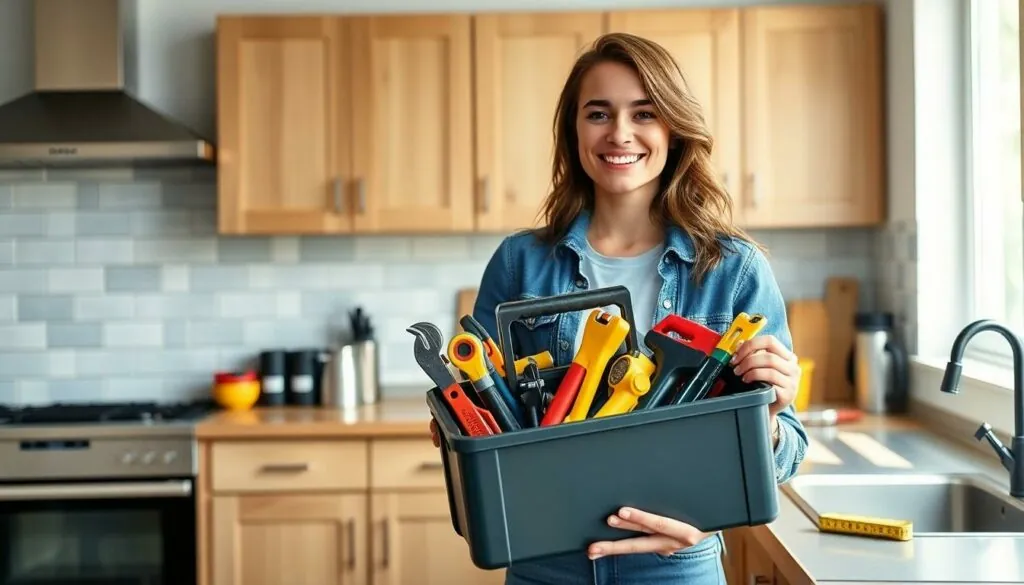Homeownership can feel like a never-ending game of whack-a-mole. Just when you think you’ve tackled one issue, another pops up to test your sanity. But fear not! Home maintenance doesn’t have to be a daunting task reserved for the DIY experts or the overly ambitious. With the right guidance, even the most clueless homeowner can become a maintenance maestro.
Imagine transforming from a bewildered novice to a confident caretaker of your castle. This guide breaks down the essentials of home maintenance into easy-to-understand tips that even your pet goldfish could follow. From squeaky hinges to leaky faucets, it’s time to roll up those sleeves and face your home’s quirks head-on. Get ready to save money, impress your friends, and maybe even uncover a hidden talent for fixing things—who knew you had a knack for plumbing?
Table of Contents
ToggleOverview of Home Maintenance
Home maintenance includes the essential tasks that keep a house functional and safe. Regular upkeep prevents small issues from becoming major problems.
Importance of Regular Maintenance
Regular maintenance protects property value. It enhances safety and comfort throughout a home. Addressing wear and tear promptly also lowers repair costs. For instance, fixing a leaky faucet right away saves water bills and reduces damage risks. Prioritizing these tasks fosters a pleasant living environment and ensures everything operates efficiently. Neglecting maintenance can lead to larger, more costly repairs over time.
Common Home Maintenance Tasks
Common home maintenance tasks include checking smoke alarms and replacing air filters. Homeowners benefit from regularly inspecting roofs and gutters to prevent water damage. Cleaning appliances, such as refrigerators and ovens, promotes efficiency and longevity. Seasonal tasks like yard work and HVAC servicing keep outdoor spaces looking tidy and comfortable. Completing these tasks regularly ensures a well-maintained home that remains enjoyable for its occupants.
Tools Every Homeowner Should Have

Home maintenance becomes simpler with the right tools. Homeowners should invest in essential equipment that makes repairs and upkeep manageable.
Essential Hand Tools
Basic hand tools form the backbone of any homeowner’s toolkit. A hammer allows for easy hanging and assembling tasks. Screwdrivers, including both Phillips and flathead varieties, are crucial for tightening screws and assembling furniture. Pliers provide grip and leverage for a variety of tasks. Utility knives excel in cutting materials and opening packages. Tape measures ensure precise measurements, avoiding costly mistakes. Additionally, a level helps maintain straight surfaces for shelves and pictures. These tools make everyday repairs quick and easy, empowering homeowners to maintain their properties effectively.
Power Tools for Home Maintenance
Power tools greatly enhance efficiency for homeowners tackling larger projects. A cordless drill simplifies drilling holes and driving screws, significantly reducing manual effort. An electric saw, such as a circular saw, facilitates quick cutting of wood and other materials. For outdoor maintenance, a power sander smooths surfaces, making painting or staining easier. Additionally, a leaf blower helps maintain yards by clearing debris with minimal time and effort. Each of these tools contributes to a homeowner’s ability to handle various maintenance tasks, increasing their confidence in home repairs.
Seasonal Maintenance Checklist
Homeowners can simplify their maintenance routine by following seasonal checklists. Each season presents unique tasks that keep homes in top shape.
Spring Maintenance Tips
Inspect gutters and downspouts for debris that may cause clogs. Clean away any leaves or dirt to ensure proper drainage. Test the irrigation system to confirm that it’s functioning well before summer. Check the roof for any signs of damage, especially after winter weather. Fertilize the lawn to promote healthy growth, and consider aerating it to improve air circulation.
Summer Maintenance Tips
Focus on air conditioning filters, replacing them monthly for optimal efficiency. Trim overgrown trees and shrubs to prevent damage to the exterior. Clean outdoor furniture and check patios for wear. Seal cracks in driveways and walkways to prevent further deterioration. Examine the exterior paint for peeling or fading and address any issues to enhance curb appeal.
Fall Maintenance Tips
Prepare the home for colder weather by inspecting windows and doors for drafts. Insulate pipes in unheated areas to prevent freezing. Clean and test the heating system to ensure it warms efficiently during winter. Rake leaves and clear gutters to avoid water damage. Store outdoor furniture and equipment safely for the season ahead.
Winter Maintenance Tips
Check smoke alarms and carbon monoxide detectors to ensure they operate correctly. Keep pathways clear of snow and ice to maintain safety. Monitor indoor humidity levels to prevent mold growth. Inspect insulation in the attic and basement for effectiveness. Review emergency kits to ensure supplies are available in case of adverse weather events.
DIY vs. Professional Help
Homeowners often face the dilemma of deciding between tackling repairs themselves or hiring professionals. Understanding when to choose each option can make maintenance simpler and more effective.
When to DIY
Homeowners should consider DIY for minor repairs and routine tasks. Small issues like squeaky hinges or leaky faucets usually require basic tools and minimal skills. Completing these tasks fosters confidence and saves money. Simple projects like changing air filters or cleaning gutters are manageable with the right resources. Home improvement guides and online tutorials provide helpful instructions. Engaging in DIY not only enhances skills but also builds a sense of accomplishment.
When to Hire a Professional
Complex repairs often warrant professional assistance. When issues involve plumbing, electrical systems, or extensive renovations, it’s crucial to consult experts. Risks associated with incorrect handling can lead to safety hazards or increased costs. Professionals possess specialized skills and tools necessary for proper repairs. In cases of structural damage, hiring a licensed contractor is essential to ensure safety and compliance with building codes. Opting for experts in these situations not only protects the home but also guarantees high-quality results.
Home maintenance doesn’t have to be a daunting task. With the right tools and a proactive approach, anyone can manage their home effectively. By tackling small issues as they arise and following a seasonal checklist, homeowners can maintain a safe and comfortable living environment.
Embracing DIY projects not only saves money but also builds confidence and skills. Knowing when to handle repairs and when to call in professionals is key to effective home management. Ultimately, taking charge of home maintenance leads to a more enjoyable living space and protects property value over time.



